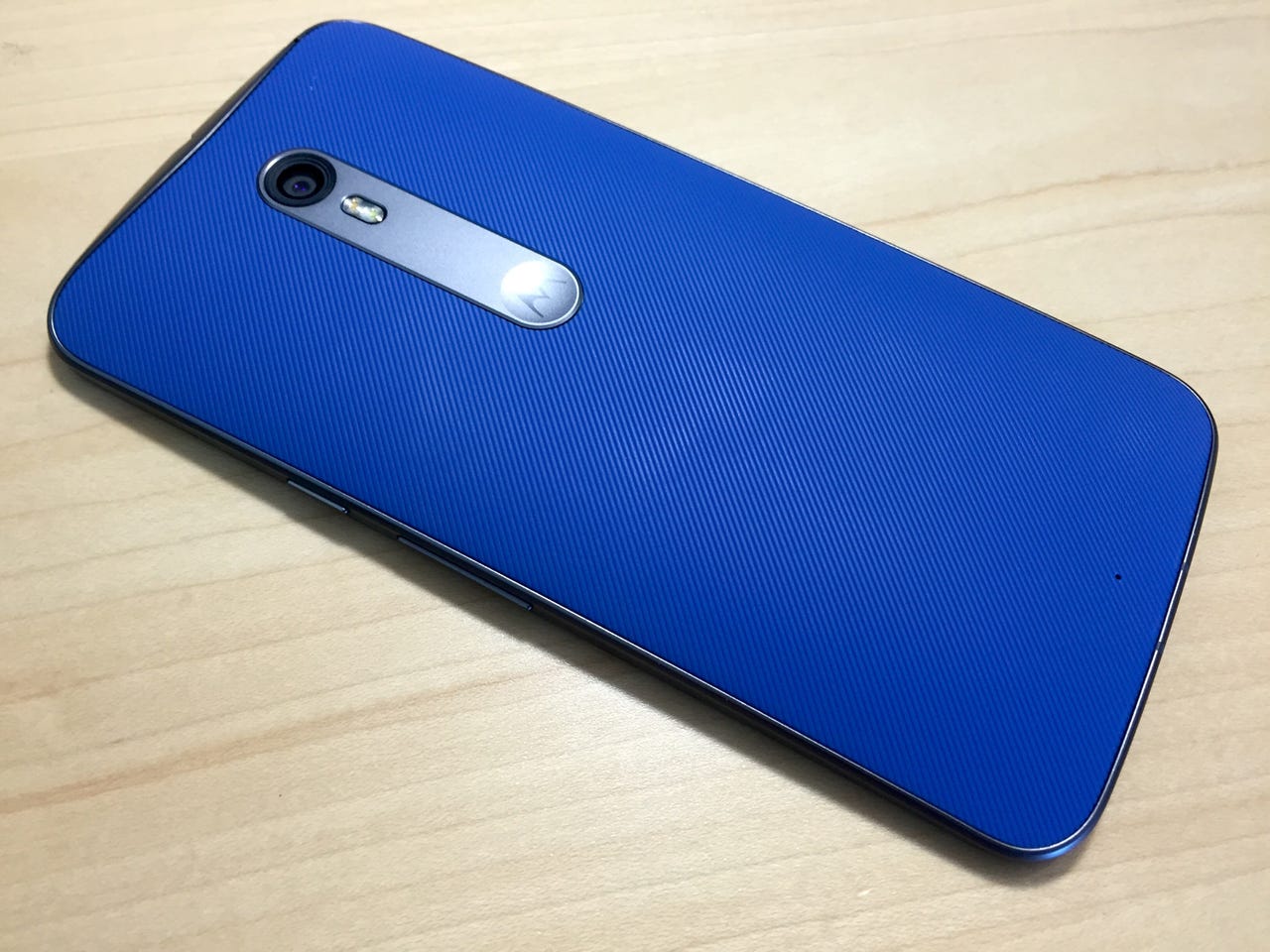Moto X Pure Edition: First impressions of the low-cost Android flagship


I've been using the Moto X Pure Edition smartphone since it arrived late last week and I'm impressed overall.
Featured
Full disclosure: I was a fan of the prior two Moto X versions, having bought them out of pocket. Perhaps that's why I like what I see so far. Motorola has evolved what was an acceptable but underpowered device with the 2013 and 2014 models into a flagship competitor that can be had for $399.
I've kept my Project Fi SIM card in the Moto X Pure and although it isn't officially supported by Google (yet), it's working fine for Wi-Fi calling and mobile broadband data.
This is the first Moto X with a microSD card, so the $399 model with 16 GB of storage may be fine for many. You can double the storage capacity for $50 and double it again for another $50 if you want. I opted to configure my Moto X with a black front, royal blue rubberized back and dark grey accents; you can choose wood or leather backs as well.
I really like how Motorola made the SIM card tray a dual purpose part: It holds a nano SIM in one side and a microSD card in the other. You won't know this until you actually remove the tray from the phone because you can't tell this from the outside of the handset.
With 3 GB of memory and a 1.8 GHz hexa-core Snapdragon 808, the Moto X is running smoothly for my typical Android needs: Gmail, social networking, content consumption on the go and light gaming. I haven't noticed any stuttering or lags with Android 5.1.1 on this handset.
Motorola took the same software approach with this year's Moto X as did for the prior models. It's basically a stock Android experience with a few Moto extras such as special gestures and the Moto Assist software. That's my preferred Android environment so if you're like me and you don't prefer "heavy" Android skins or launchers, you'll be happy with the Moto X implementation.
The 5.7-inch screen on the Moto X Pure has the same size and resolution as the Samsung Galaxy S6 Edge+ that I'm also testing. In fact, the two phones are nearly identical in overall size but the Moto X has a rounded back, so it's thicker. I find it more comfortable to hold.
Although the phones both have a 1440x2560 resolution display, I actually prefer the Samsung screen. Samsung uses its AMOLED displays while the Moto X this time around has a traditional IPS LCD; the colors seem a bit better on the Samsung phone to my eye, but it's not a deal-breaker by any means.
Motorola's cameras have left something to be desired in the past. This time around it's a 21 megapixel sensor that's much improved. I'll have a photo gallery to post later this week. Suffice it to say: In bright indoor or general outdoor light, the Moto X camera is quite good. In low light, it's sufficient and I see a little room for improvement.
The dual front-facing stereo speakers are very loud although they fall slightly short compared to the HTC One M9. Compared to most handsets though, they're a treat to hear.
As promised, the Moto X does charge very quickly. Moto says a 15 minute charge can provide 10 hours of run-time and it's safe to say the Turbo Charging works as advertised. I'm getting through a full day on a single charge but without topping off at some point, two days isn't likely for most people.
I'll have a full review of the Moto X Pure Edition later this week. Overall, however, Motorola is delivering on its promise of a flagship quality phone that works with every carrier out of the box and can cost less than half that of the competition.